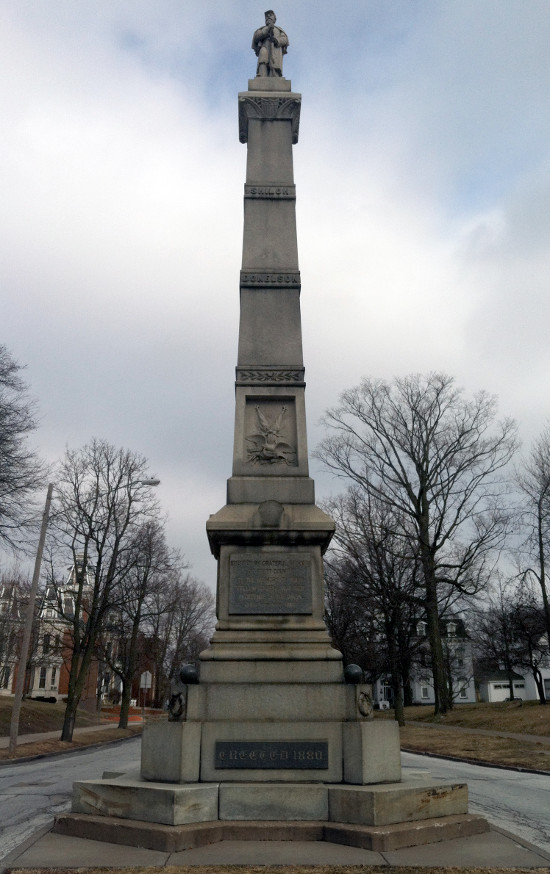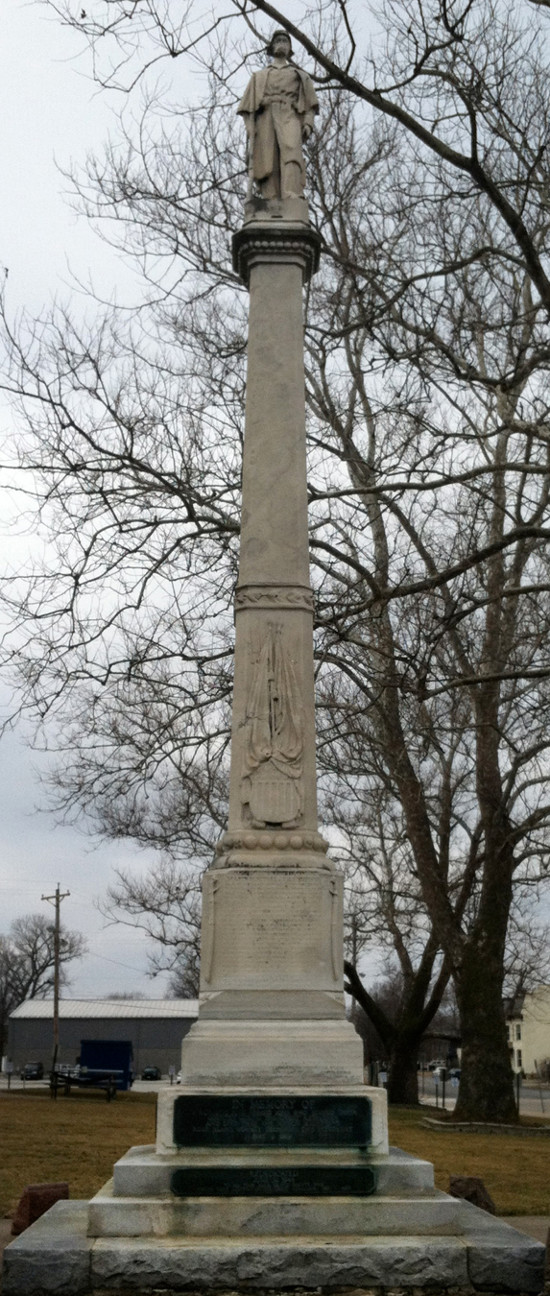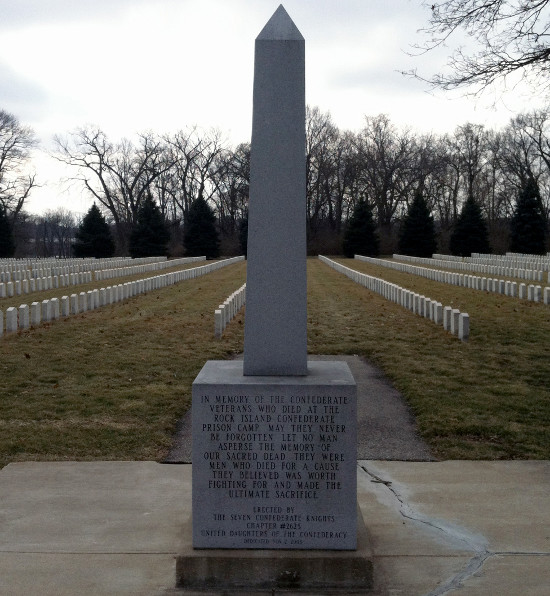
The Quad Cities have two prominent, highly visible Civil War monuments: the Rock Island County Soldiers' Monument in Rock Island and the Scott County Soldier's Monument in Davenport. Both were completed in the years following the war. It was not until 2003, however, that a monument to the Confederate soldiers who died at the Rock Island Arsenal was built.
The Rock Island County monument, located on the county-courthouse grounds near the Centennial Bridge, was unveiled on April 9, 1869 - the fourth anniversary of General Robert E. Lee's surrender at Appomattox. The memorial was designed by Leonard Wells Volk (1828-1895), who briefly lived in Rock Island before opening his studio in Chicago in 1857. Volk had the distinction of being the only sculptor to model Abraham Lincoln's features from life; casts of the future president's face and hands were made by Volk in 1860.
The Scott County Soldier's Monument, located in the center of the 1100 block of Main Street near Central High School, was dedicated a dozen years later, on July 4, 1881. Rodney Forsyth Carter (1838-1912) is credited as the monument's designer.
Intended initially as a memorial to Abraham Lincoln, the project stalled until Nicholas Fejervary promised funding support on the condition that the landmark would memorialize the fallen soldiers from Scott County. Fejervary was a Hungarian count who came to Davenport after the 1848-49 Hungarian War of Independence. His only son, Nicholas Fejervary Jr., was killed in the one of the first battles of the Civil War.
In both monuments, a Union infantry soldier stands in readiness with a rifle at the top of a single column. The placement of a figure atop a pillar is a traditional memorial form that was first established in 113 AD with the building of Trajan's Column in Rome. The use of a common soldier, instead of a well-known leader such as a general, began with the Civil War memorials built in communities across the nation; it was a distinctly American idea.

With a height of 50 feet, the Scott County monument is noticeably more massive than the 33-foot-tall Rock Island County monument. The Scott County structure, because it was made from granite, is also far better preserved; weather and pollution have taken a toll on the marble figure and shaft of the Rock Island monument.
The loss of details and the ghostly white of the marble, however, give the Rock Island monument an ethereal quality. The weathered, incised names are almost indiscernible - seemingly just out of reach. The worn face of the soldier contrasts with its relatively well-preserved body, which makes the loss of the face all the more striking and poignant.

Separate from the National Cemetery on the Rock Island Arsenal is a cemetery for the Confederate soldiers who died at the island's prison camp during the war. At the cemetery's entrance is 10-foot-tall memorial for the 1,964 soldiers who died there, mostly of exposure and disease. Though the prison was constructed in 1863, 140 years would pass before this monument was built. Its newness, in stark contrast to the weathered condition of the Rock Island County monument, reminds us how long it took for this memorial to come to fruition.
The monument is unadorned except for the informational words on the base. It is in the form of an obelisk, the same shape as the Washington Monument in Washington, DC. The significance of this similarity is that the first president was a hero to both the North and the South. Through the use of this form, a sense of common roots and shared loss is conveyed symbolically.
In his second inaugural address, Abraham Lincoln said: "Both [North and South] read the same Bible, and pray to the same God; and each invokes His aid against the other. It may seem strange that any men should dare to ask a just God's assistance in wringing their bread from the sweat of other men's faces; but let us judge not that we be not judged." To state this while the war was still being fought showed an extraordinary belief in equity and a desire for reconciliation. Subtly, these ideas are also expressed in this modest monument - complementing the area's older and larger memorials.
Bruce Walters is a professor of art at Western Illinois University.
This is part of an occasional series on the history of public art in the Quad Cities. If there's a piece of public art that you'd like to learn more about, e-mail the location and a brief description to BD-Walters@wiu.edu.








